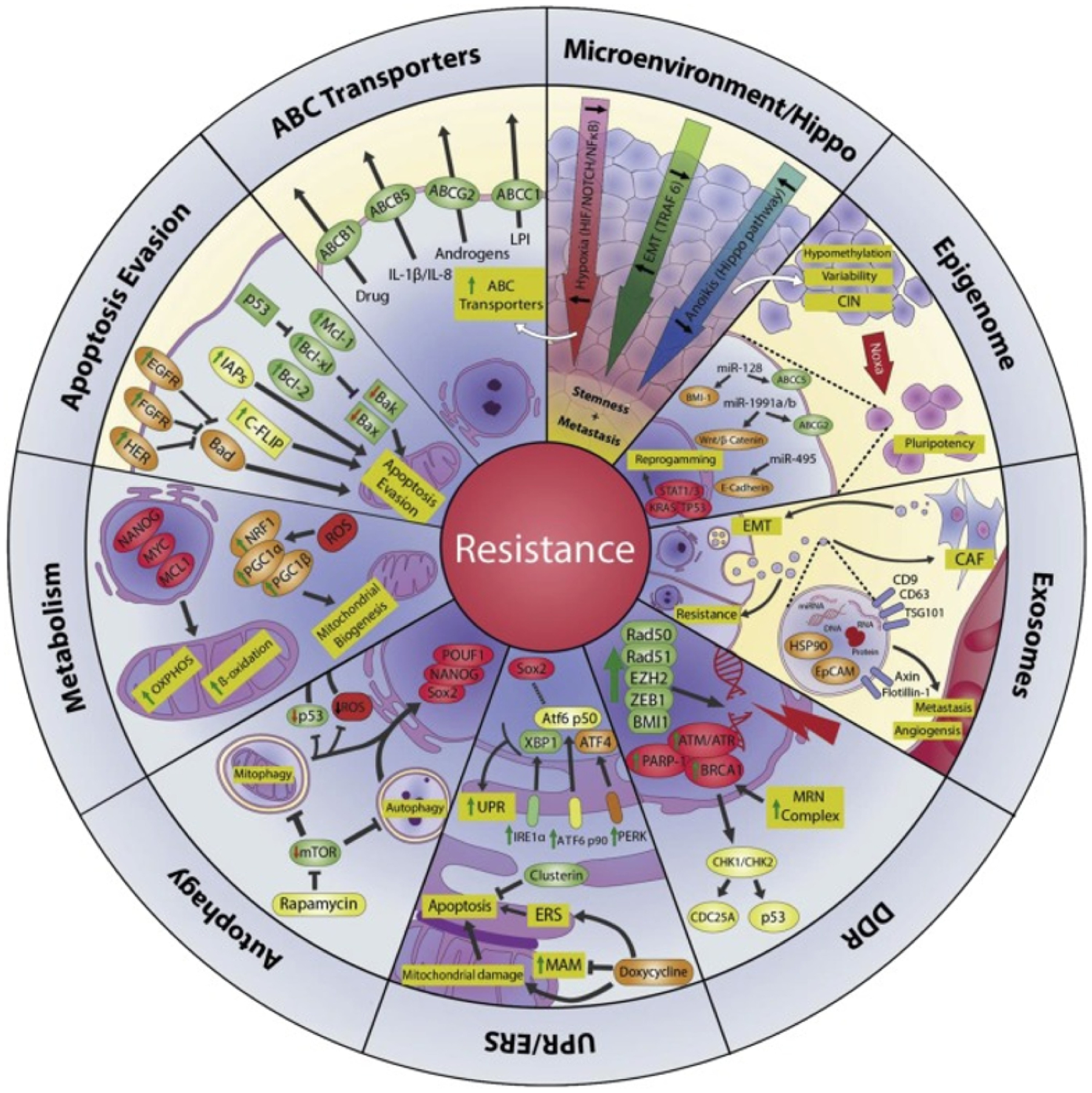Fig. 2.

Mechanisms of therapy resistance in CSCs. ABC transporters: ABC transporters reduce the effective concentration of cytokines and administered chemotherapeutics in the cytoplasm. Microenvironment/Hippo: The tumor microenvironment (increased EMT, hypoxic conditions, inhibited Hippo pathway) contributes to increased stemness of CSCs. Epigenome: Instability of chromatin and changes in epigenetic modulators allow for phenotypic differentiation of CSCs. Exosomes: Exosomes promote a CSC phenotype in normal tumor cells by transporting MDR transport proteins to recipient drug sensitive cells. DNA damage repair (DDR): An increased DDR is observed in CSCs due to overexpression of proteins involved in repairing DNA damage (PARP-1, BRCA1, RAD 50, etc.). UPR/ERS: Endoplasmic reticulum stress (ERS) is characterized by presence of misfolded protein in the ER lumen. The unfolded protein response (UPR) signal transduction pathway which balances the ER protein folding is disturbed in the presence of certain physiological conditions (hypoxia, TME, unstable genome). Autophagy: Autophagy has been shown to increase CSC survival and aggressiveness by improving stress tolerance. Metabolism: CSCs can efficiently adapt metabolic pathways or switch pathways to maintain an energy source. This makes them thrive in adverse conditions and imparts resistance to most conventional anti-cancer treatments. Apoptosis evasion: CSCs evade apoptosis by regulating (or altering) apoptotic genes during transcription, translation or even post-translation. Figure adapted from [17]
